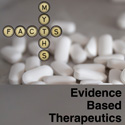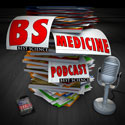Episode 253: Food and You – the evidence conundrum – PART II
In episode 253, James and Mike continue biting off the evidence around nutrition. We discuss salt, breakfast, eggs, fiber, coffee, fruit and vegetable servings, and alcohol. At the end, we get terribly confused and go out and have a smorgasbord.
Show notes
1) Salt
N Engl J Med 2014;371:601-11
BMJ 2013;346:f1325 doi: 10.1136/bmj.f1325
Institute of Medicine – May 2013
N Engl J Med 2014;371:612-23
N Engl J Med 2014;371:677-9
2) Breakfast
Am J Clin Nutr 2013;98:1298-308
Am J Clin Nutr 2014;100:539–47
Am J Clin Nutr 2014;100:626–56
3) Eggs
Atherosclerosis 2012;224:469-73
BMJ 2013;346:e8539 doi: 10.1136/bmj.e8539
4) Fiber
Arch Intern Med 2004;164:370-6
BMJ 2013;347:f6879
BMJ 2011;343:d6617 doi: 10.1136/bmj.d6617
5) Coffee
Circulation 2014;129:643–59
Eur J Epidemiol 2013;28:527–39
6) Servings
J Epidemiol Community Health – March 2014
BMJ 2014; 349 doi: http://dx.doi.org/10.1136/bmj.g4490
7) Alcohol
Addiction 2012;107:1246–60


